After winning their first championship in 50 years in 2020/21, the Bucks followed it up with a stellar title defense in ’21/22.
Star forward Giannis Antetokounmpo turned in another MVP-caliber performance, leading Milwaukee to a 51-win season. The Bucks had the third-best offense in the NBA, despite the fact that their three stars – Antetokounmpo, Khris Middleton, and Jrue Holiday – all missed at least 15 games due to various injuries, while starting center Brook Lopez was limited to just 13 total appearances due to back surgery.
The Bucks entered the playoffs looking capable of making a deep run and quickly dispatched the Bulls in the first round, but Middleton sustained a knee injury during that series that ultimately ended his season, removing one of the team’s best two-way threats from the chess board for the Eastern Conference Semifinals. Milwaukee still made it a competitive series, but fell to Boston in a hard-fought seven games.
With Antetokounmpo, Middleton, and Holiday all under contract going forward, the Bucks appear unlikely to make serious changes to their core, but will face some important decisions on members of their supporting cast.
The Bucks’ Offseason Plan:
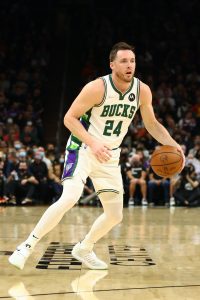 A handful of key Bucks rotation players are eligible for free agency, including three wings: Pat Connaughton, Wesley Matthews, and Jordan Nwora.
A handful of key Bucks rotation players are eligible for free agency, including three wings: Pat Connaughton, Wesley Matthews, and Jordan Nwora.
While it’s possible Connaughton will simply pick up his $5.7MM player option and postpone his free agency until 2023, he’s coming off the best year of his career — he averaged a career-high 9.9 PPG and shot 39.5% from outside the arc in 65 games (26.0 MPG). He has earned a raise and the Bucks hold his Bird rights, so they have the cap flexibility to give it to him as long as they’re comfortable paying the associated tax penalty.
Matthews will be entering his age-36 season and can’t be counted on to play as big a role as he did earlier in his career in Portland and Dallas, but he and the Bucks have established a good relationship, so perhaps he’ll be back on a minimum-salary contract to fill out the roster.
Nwora’s free agency will be more interesting. Although he wasn’t part of the playoff rotation, the 23-year-old took some promising steps forward in his second NBA season, bumping his scoring average to 7.9 PPG and hitting 34.8% of his threes. An athletic forward with some defensive upside, Nwora could be a useful piece for Milwaukee going forward — the Bucks will have to hope no rival suitors aggressively try to pry the restricted free agent away from them.
In the frontcourt, Bobby Portis has played on a below-market deal in each of the last two seasons, but has certainly earned a raise, particularly after filling in for Lopez at center for much of 2021/22. Holding his Early Bird rights, the Bucks will be able to give Portis a deal starting up to approximately $11MM. It will be interesting to see whether they’re more inclined to pay up for Portis than they were for P.J. Tucker a year ago.
Even if the Bucks retain Portis, more changes at the center spot could be around the corner. Lopez is coming off back surgery, is 34 years old, and will be on an expiring $13.9MM contract in 2022/23, so I wouldn’t be surprised if his name pops up in trade rumors. While Lopez’s ability to hit three-pointers and protect the rim has value, the Bucks would probably love to have a center more capable of handling switches and guarding out to the perimeter.
In his prime, Serge Ibaka was that sort of player, but he’s coming off a back surgery of his own and didn’t look like his old self this past season. If his medicals look OK and he’s willing to sign at a bargain rate, perhaps a return to Milwaukee is possible, but otherwise I’d expect the club to look elsewhere for center depth.
While Bucks ownership has shown that it’s prepared to pay luxury tax bills, I don’t get the sense that they’re willing to go into Warriors or Clippers territory, so if Portis, Connaughton, and Nwora all seek raises, I wouldn’t necessarily count on all three returning — one of the wings could be the odd man out.
Depending on how much they spend to retain their own free agents, the Bucks may try to bring in another rotation piece using the taxpayer mid-level exception. It’ll be worth about $6.4MM, but spending it could cost exponentially more if team salary is well above the tax line.
One move to watch out for is the possibility of the Bucks trading down in the draft from No. 24 to the second round. Even though late first-round picks aren’t particularly expensive, second-rounders who are on minimum-salary contracts are significantly more affordable for tax purposes. So if, for instance, Orlando is willing to offer No. 32 and No. 35 to move up to No. 24, I think the Bucks would be intrigued by the idea, since locking in a couple low-cost roster spots may make them more comfortable about spending elsewhere.
Salary Cap Situation
Note: Our salary cap figures are based on the league’s latest projection ($122MM) for 2022/23.
Guaranteed Salary
- Giannis Antetokounmpo ($42,492,492)
- Khris Middleton ($37,948,276)
- Jrue Holiday ($33,665,040)
- Brook Lopez ($13,906,976)
- Grayson Allen ($8,500,000)
- George Hill ($4,000,000)
- Sandro Mamukelashvili (two-way)
- Total: $140,512,784
Player Options
 Pat Connaughton ($5,728,393): Bird rights
Pat Connaughton ($5,728,393): Bird rights- Bobby Portis ($4,564,980): Early Bird rights
- Thanasis Antetokounmpo ($1,878,720): Bird rights
- Total: $12,172,093
Team Options
- None
Non-Guaranteed Salary
- Rayjon Tucker ($1,815,677)
- Luca Vildoza ($1,752,638) 1
- Total: $3,568,315
Restricted Free Agents
- Jordan Nwora ($2,011,516 qualifying offer / $2,011,516 cap hold): Early Bird rights
- Total (cap holds): $2,011,516
Two-Way Free Agents
- Lindell Wigginton ($1,616,044 cap hold): Non-Bird rights
- Total: $1,616,044
Draft Picks
- No. 24 overall pick ($2,451,840)
- Total: $2,451,840
Extension-Eligible Players
Note: These are players who are either already eligible for an extension or will become eligible before the 2022/23 season begins.
- Pat Connaughton (veteran) 2
- Brook Lopez (veteran)
- Khris Middleton (veteran)
Unrestricted Free Agents / Other Cap Holds
- Serge Ibaka ($12,637,170 cap hold): Early Bird rights
- Jevon Carter ($1,811,516 cap hold): Non-Bird rights
- Wesley Matthews ($1,811,516 cap hold): Non-Bird rights
- Jeff Teague ($1,811,516 cap hold): Non-Bird rights 3
- Total: $18,071,718
Offseason Cap Outlook
With $140MM+ in guaranteed money committed to just six players, the Bucks are on track to go well beyond the projected $149MM tax line even if they just let all their free agents walk and trade their first-round pick. More realistically, at least one of those two free agents will be back and Milwaukee’s team salary will likely increase beyond the $160MM spent on player salaries this past season.
Cap Exceptions Available
- Taxpayer mid-level exception: $6,392,000 4
- Trade exception: $1,517,981
Footnotes
- Vildoza’s salary will become partially guaranteed ($500K) after the first day of the regular season.
- Connaughton would only be eligible if his option is exercised.
- The cap hold for Teague remains on the Bucks’ books from a prior season because he hasn’t been renounced. He can’t be used in a sign-and-trade deal.
- These are projected values.
Salary and cap information from Basketball Insiders and RealGM was used in the creation of this post.
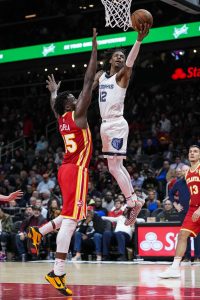 I referred above to Morant as “around for the long haul,” but he and the Grizzlies still need to make that official. That should be one of the first – and most straightforward – orders of business for the team this offseason. Morant will become eligible on July 1 for a maximum-salary rookie scale extension, and I expect Memphis to immediately put that offer on the table.
I referred above to Morant as “around for the long haul,” but he and the Grizzlies still need to make that official. That should be one of the first – and most straightforward – orders of business for the team this offseason. Morant will become eligible on July 1 for a maximum-salary rookie scale extension, and I expect Memphis to immediately put that offer on the table.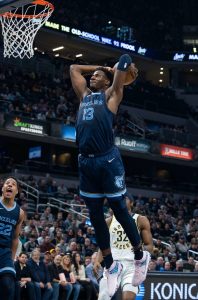
 Or that was the plan, at least. In actuality, Harden – perhaps bothered by a lingering hamstring injury – only occasionally looked like his old MVP self after arriving in Philadelphia, posting career-worst shooting averages (.402 FG%, .326 3PT%) in 21 regular season appearances as a Sixer and failing to elevate his game in the playoffs. Additionally, the 76ers’ depth, which was already somewhat lacking, took a hit in the Simmons deal when the team surrendered role players
Or that was the plan, at least. In actuality, Harden – perhaps bothered by a lingering hamstring injury – only occasionally looked like his old MVP self after arriving in Philadelphia, posting career-worst shooting averages (.402 FG%, .326 3PT%) in 21 regular season appearances as a Sixer and failing to elevate his game in the playoffs. Additionally, the 76ers’ depth, which was already somewhat lacking, took a hit in the Simmons deal when the team surrendered role players 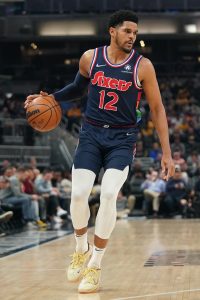
 June 21:
June 21: July 20:
July 20: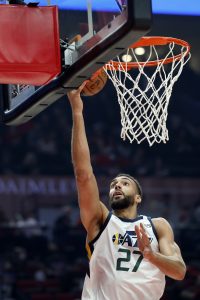 Dating back at least to the time they both contracted COVID-19 in March 2020, there have been reports of tension between Jazz All-Stars
Dating back at least to the time they both contracted COVID-19 in March 2020, there have been reports of tension between Jazz All-Stars 
 Chicago was still the East’s top seed as late as February 25, but injuries ultimately caught up to the team. Caruso and Ball only played 41 and 35 games, respectively, while starting power forward
Chicago was still the East’s top seed as late as February 25, but injuries ultimately caught up to the team. Caruso and Ball only played 41 and 35 games, respectively, while starting power forward 
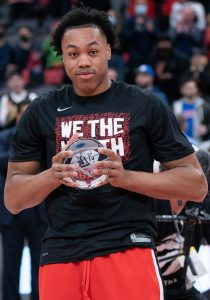 The rapid emergence of eventual Rookie of the Year
The rapid emergence of eventual Rookie of the Year 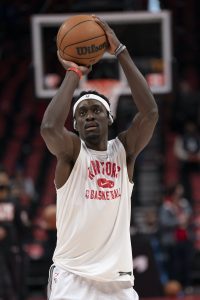
 Here are a couple specific examples to help make things a little clearer:
Here are a couple specific examples to help make things a little clearer: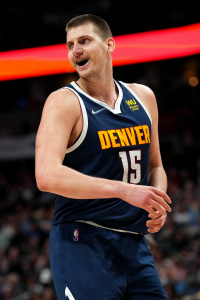 Given the absences of those two key players, it should have been a lost season for the Nuggets, but Jokic was so good that you got the sense the team still had a chance to make some noise in the playoffs if Murray and Porter could make it back.
Given the absences of those two key players, it should have been a lost season for the Nuggets, but Jokic was so good that you got the sense the team still had a chance to make some noise in the playoffs if Murray and Porter could make it back.